If there’s one thing about horse care that everyone knows, it’s that horses are large outdoor animals and need a good amount of space to thrive. But when it comes to pasture size, just how much space are we talking about? How many acres does a horse need to live comfortably?
How many acres do you need for a horse? While there is a general rule of thumb of at least 1.5 to 2 acres of fertile, grassy land per horse, it can depend on various circumstances. For example, an acre of fresh, well-managed Kentucky bluegrass pasture is going to be worth a lot more than an acre of sparse scrub and dirt, where you’ll need more land in order to make more forage available.
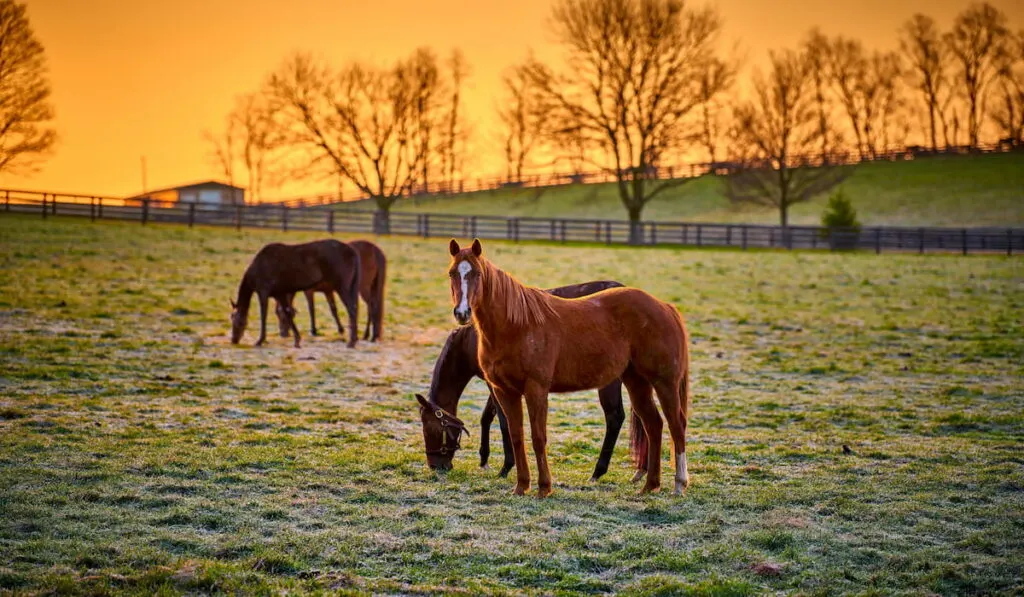
Table of Contents
How Many Acres do Horses Need to Live on Pasture Alone?
If you have a horse that is going to be living entirely on pasture, your number one concern is, making sure you have an adequate amount of natural forage to provide for it.
Research tends to support the conventional thinking of 1.5 to 2 acres per horse, but that comes with a caveat of being rich pasture that is well managed. That should, in theory, provide your horse with enough forage and also enough space to move around in.
However, this estimate is a variable and a minimum that is very much dependent on your climate as well as your horse’s characteristics. (source)
If your horse is younger and more energetic versus older and more docile, that will affect what they need from your pasture. If you are supplementing their diet (not just with grain but with hay or alfalfa), that will affect the amount of grass they need to consume.
The East Coast, specifically the MidAtlantic region, tends to produce rich pastures. In these areas, around 2 acres per horse will probably ensure enough for most horses’ needs.
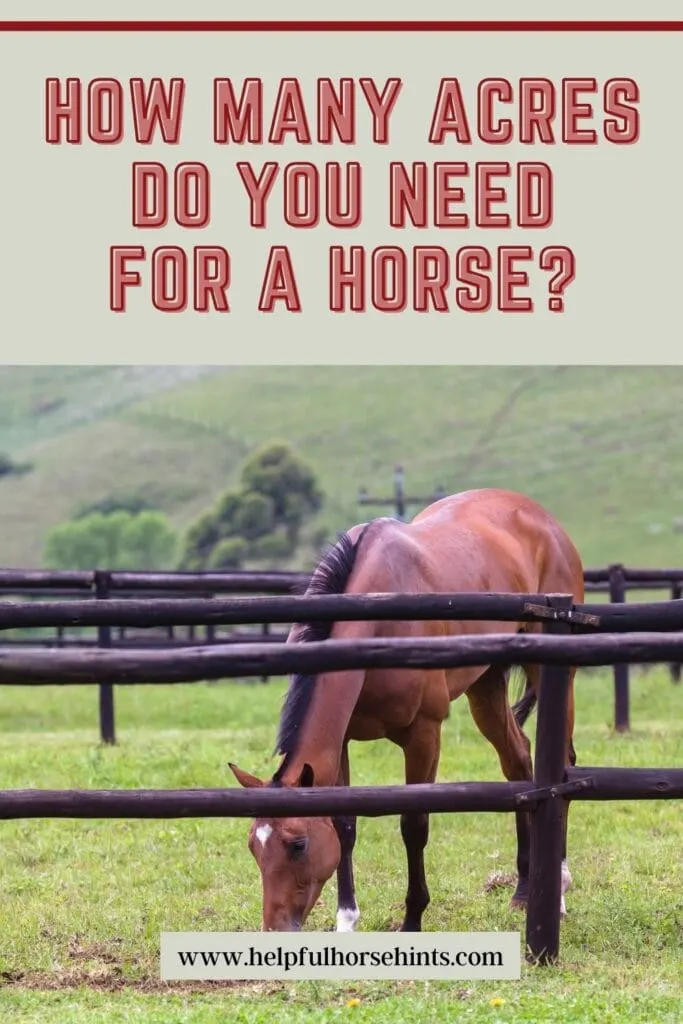
In some parts of the South, the West or the Midwest, though, climate can limit seasonal grass growth, meaning you may need up to 10 acres per horse in order for them to have access to enough food.
In some regions where pasture is naturally dry and not irrigated, the growth of grass can be so sparse that you can need 30 – 40 acres per horse for them to have enough to eat. Even then you may have to supplement your horse’s diet with hay.
Some experts have suggested a 70-30 rule of thumb: 70% vegetation, 30% bare ground. This means you should strive for a minimum of 70% of your land being covered by edible pasture. (source)
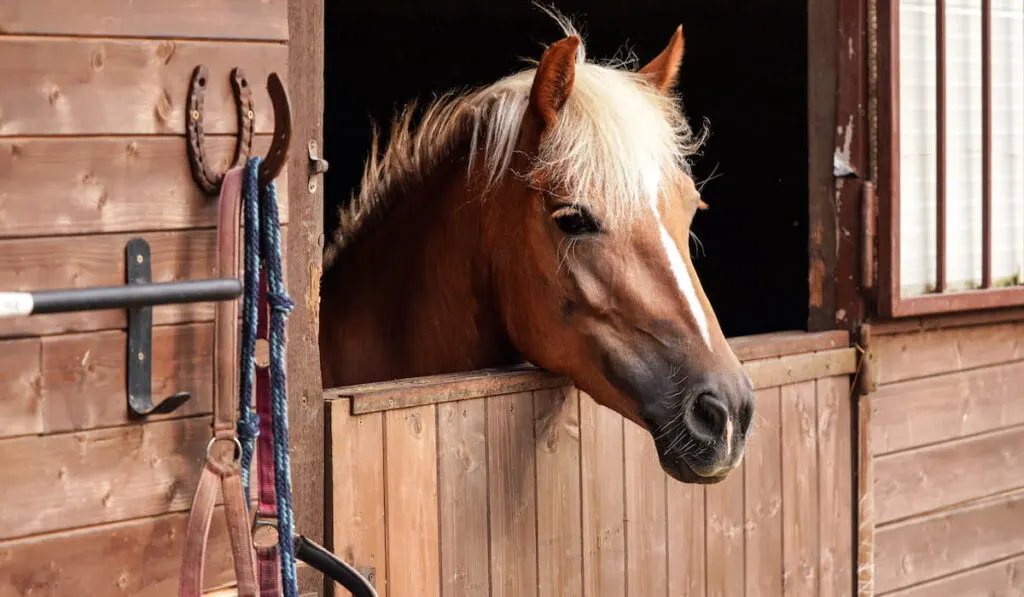
How Much Space Does a Horse Need If It Is in a Stall?
Stall space is something else that is not a “one size fits all.” You want a horse’s stall to be roomy enough that they can lie down and can walk about at least in a circle with ease.
If your horse is going to be in a stall for an extended amount time (such as on a 50/50 turnout schedule, during bad weather, when they are on stall rest for an injury, etc.) you want to make sure they’re comfortable and have enough room to stretch their legs.
While the generally accepted standard is 12 feet by 12 feet, if you have a pony or a smaller breed (meaning under 15 hands), such as an Arabian, a stall can be as small as 10 feet by 10 feet in size. (source)
For larger horses, such as warmbloods and drafts, a stall sized to be 14 feet by 14 feet may be more comfortable. If you are breeding horses, a foaling or stallion will need to be even larger.
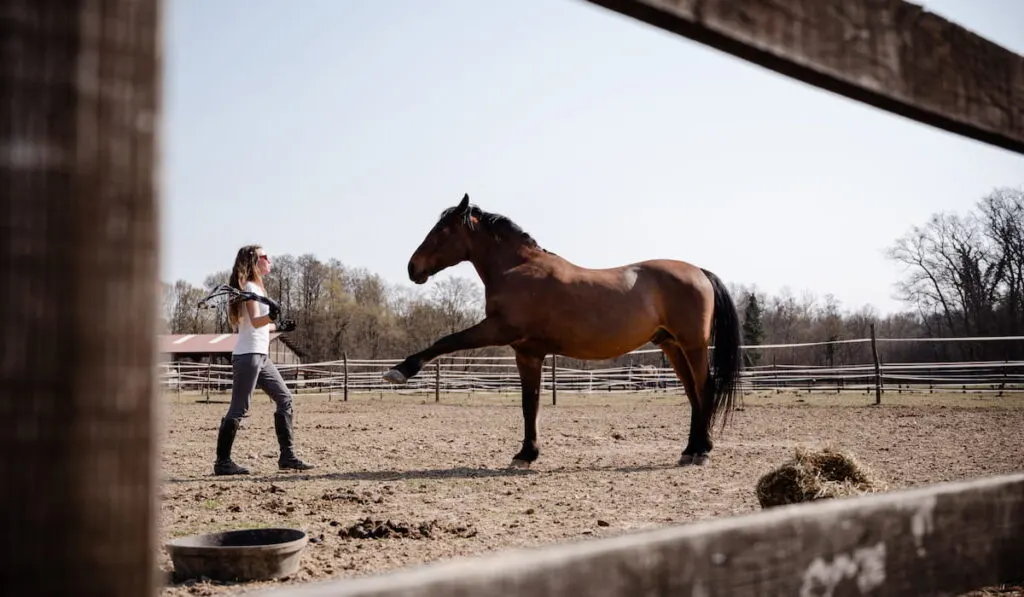
How Big of a Paddock does a Horse Need?
If you are housing your horse on managed pasture, or only have a small area for turnout, you need to fence off a smaller space. This is called a paddock.
For horses on managed pasture, having this set aside is essential. Overgrazing and even too much time spent trampling grazing paddock can kill the grass, especially in the winter months when grass is not growing back naturally.
For stabled horses with limited space, even a small paddock can give a horse a welcome break from life in a stall.
Again, there is some variation here, but paddocks generally should be at least 600 square feet per horse. (source) That does not mean, though, that they need to be huge – paddocks are by nature smaller in size and tend to stay under one acre at maximum.
When determining how big to make your paddock, there are a number of factors to consider. For example, the grade (or slope) of the land is important. A maximum of a 5% grade is recommended. A slight slope is encouraged so that the paddock itself can drain properly, but anything more will put stress on your horse’s legs, not to mention build up mud or water that your horse would be standing in.
You also need to consider the horses themselves. Though 600 square feet per horse is the minimum, if you have younger or more high-strung horses, you may need to allow them more room per horse.
Similarly, if you regularly exercise your horses, they may be content with less space, as they likely won’t need to be burning pent up energy on their own time.
A paddock should avoid ground that is frequently muddy and should not be built over a septic system. You’ll also need to consider the fencing for it. The material should be strong and solid, designed to hold up to a horse’s kick. It also should be material that will not injure your horses – something with no jagged or protruding edges. For example, you should never use barbed wire.
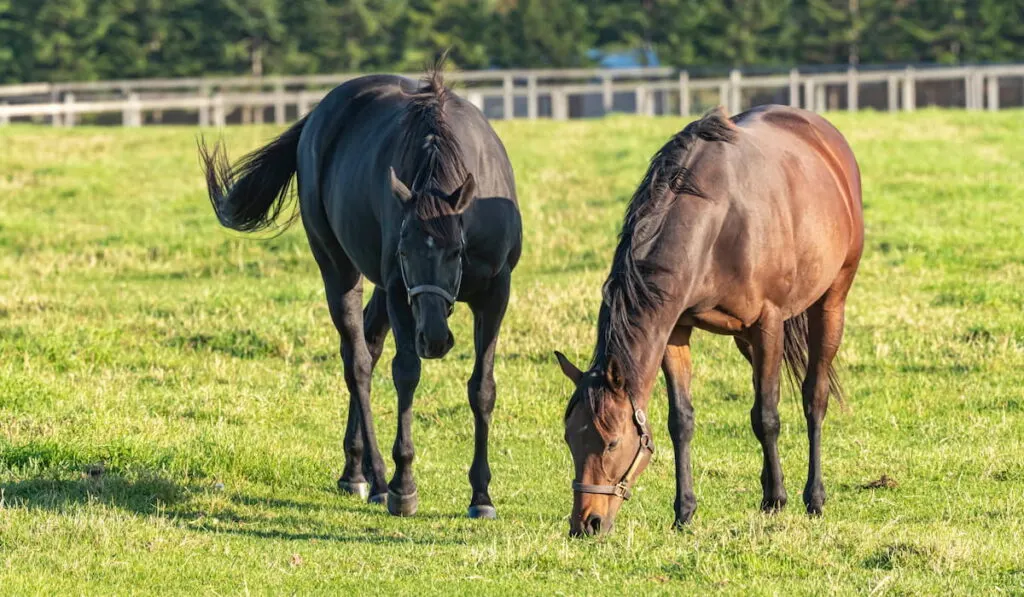
How Much Grazing Time Per Day do Horses Need?
While conventional thinking may say that the more time a horse is turned out, the more they graze, which often tends not to be true. Not only can horses find it hard to meet 100% of their nutritional dietary requirements from grazing alone, but horses are smart and react to time constraints. (source)
If they are outside grazing for less time each day, they ramp it up and eat more per hour – a literal crunch time in their minds. (source)
That said, good quality pasture is an excellent food source, delivering both digestible energy and crude protein. Remember, horses are herbivores designed to sustain their large bodies on mostly forage.
When the spring grass blooms again after a harsh winter, your horse may be tempted to run right in, and overeat. Over-consumption of rich spring grass can lead to serious health issues and costly vet bills.
As the spring grass comes in, you should slowly introduce your horse back to the fresh pasture. Once they’re used to it back in their diet, most horses will easily adapt to a routine.
Horses graze an average of 70% of the time they are out on pasture and spend about 10% of the time walking and playing (the rest of the time they sleep). (source)
So, if you have a horse that is on pasture 24 hours a day, they’ll be grazing for 17 hours, eating around 25 pounds in grass. However, if a pasture is of poor quality, those ratios may differ, as they’ll likely be spending more time walking around looking for good grass.
Since the ideal amount for a horse to forage daily is at least 1% of their body weight, horses should graze at minimum for 8 to ten hours a day. If they dip below that, their diets need to be supplemented with hay.
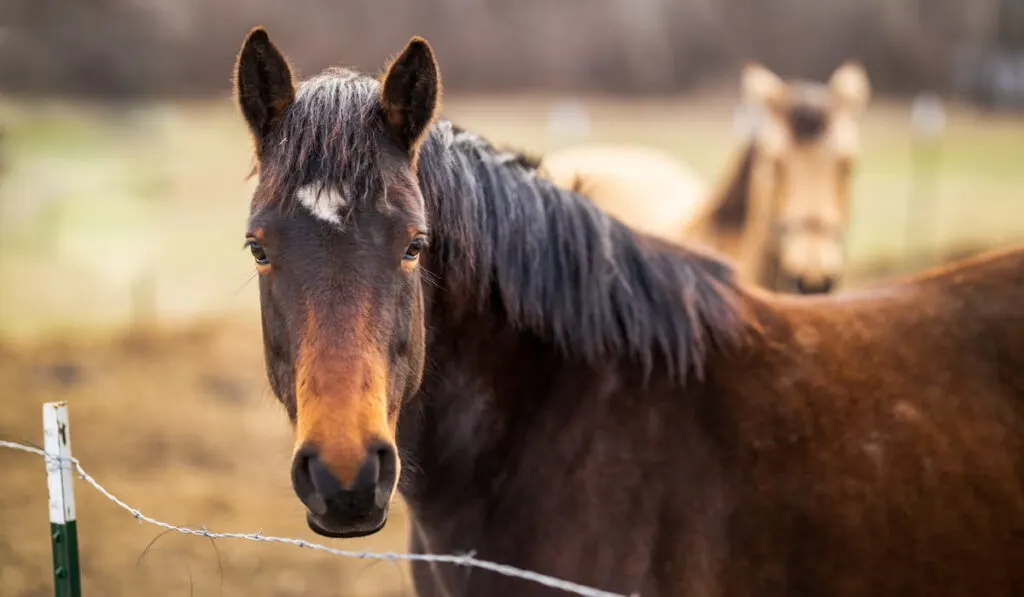
State by State: Laws and Locations
Aside from suggestions of pasture size, there are also state laws and local zoning ordinances that you may need to adhere to. Often these regulations vary from country to county. (source) For example, in Maryland, some counties have no acreage minimum, while others do.
In place of space regulations, they may have other land requirements that need to be met. Always check with your local zoning board for current legal information.
Horse ownership does come with a need for land, but how much land can vary depending on your location, your type of horses, etc. While a minimum of 2 acres per horse is considered the standard, you may need more or you may even be able to manage on a little less.

